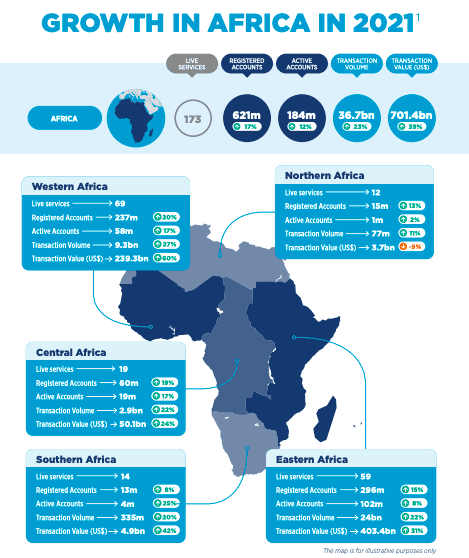G
Guest Contributor
Guest
Starting a business can feel like solving a puzzle with too many pieces, but the first step is always the same: choosing the right idea. Not just any idea, but one that resonates with the market and solves a real, painful problem.
Here’s the approach I use (and teach): study markets first, then go niche to solve problems for specific groups of people. Let’s break it down together.
Before you get caught up in the excitement of brainstorming, ask yourself this: Who am I building for, and how many of them are there? A good business idea doesn’t live in isolation; it thrives in a market with enough people willing to pay for a solution.
Look around you — there are groups of people with clear, specific needs. Teachers struggling with endless paperwork. Lawyers hunting for better ways to manage clients. Pastors juggling community building with admin duties. These are just a few examples of niches hiding untapped opportunities.

Understand the market
Here’s how you find the right market:
Once you’ve found a promising market, it’s time to get specific. What’s the real pain people are experiencing? This isn’t about scratching the surface; it’s about finding pain points that make people lose sleep.
Take teachers, for instance. Their challenges go beyond “busy schedules.” Many spend hours grading papers or organizing lesson plans outside school hours. Solving that is a game-changer.
Here’s how to uncover these pain points:
Now you’ve got a market and a pain point. Great! But don’t go all-in just yet. It’s time to validate your idea. This doesn’t mean building the entire product — it means starting small to gauge interest.
Here’s what I recommend:
Once your idea is validated, it’s time to build. But remember: start small, solve one core problem, and do it exceptionally well.

Build with focus
For instance, if your target market is lawyers who need help organizing client documents, don’t try to create a full-fledged case management system on day one. Build a simple tool that lets them categorize and retrieve files quickly.
The goal is to solve the deepest pain first. Everything else can wait.
Sometimes, your first idea won’t stick — and that’s okay. The best entrepreneurs know when to pivot. If your idea isn’t gaining traction, go back to your research. Did you miss a bigger pain point? Are you targeting the wrong audience?
Building a startup isn’t a straight road; it’s a series of experiments. Treat every failure as data for your next iteration.
Choosing an idea to build is less about sudden inspiration and more about systematic exploration. Study the markets, find real pain points, test your assumptions, and build focused solutions.
So, which market are you diving into next? Teachers, lawyers, pastors, or something entirely different? Let me know — I’d love to hear what you’re building!
I frequently help startups Validate & Ship their MVPs.
Follow along with our live build-in series starting soon, watching me take a Product from Idea to Revenue.
See also: Stereotypes to virality: How Charity Ekezie’s TikTok content challenges global misconceptions about Africa
Here’s the approach I use (and teach): study markets first, then go niche to solve problems for specific groups of people. Let’s break it down together.
Step 1: Start with the Market
Before you get caught up in the excitement of brainstorming, ask yourself this: Who am I building for, and how many of them are there? A good business idea doesn’t live in isolation; it thrives in a market with enough people willing to pay for a solution.
Look around you — there are groups of people with clear, specific needs. Teachers struggling with endless paperwork. Lawyers hunting for better ways to manage clients. Pastors juggling community building with admin duties. These are just a few examples of niches hiding untapped opportunities.

Understand the market
Here’s how you find the right market:
- Follow the numbers: Is the market large enough to sustain your business? Think thousands, if not millions, of potential customers.
- Look for spending power: Are people in this niche willing to pay for solutions? Free users are nice, but paying users keep the lights on.
- Seek momentum: Is this market growing or evolving? A stagnant market can leave you building solutions no one cares about anymore.
Step 2: Zoom in on the Pain
Once you’ve found a promising market, it’s time to get specific. What’s the real pain people are experiencing? This isn’t about scratching the surface; it’s about finding pain points that make people lose sleep.
Take teachers, for instance. Their challenges go beyond “busy schedules.” Many spend hours grading papers or organizing lesson plans outside school hours. Solving that is a game-changer.
Here’s how to uncover these pain points:
- Talk to real people: Interviews are gold. Spend 30 minutes with someone in your target group and just listen.
- Observe behaviour: What tools are they already using? Are they duct-taping solutions together because nothing truly works?
- Dive into communities: Facebook groups, forums, subreddits — wherever your target audience gathers to vent and share advice.
Step 3: Test the Waters
Now you’ve got a market and a pain point. Great! But don’t go all-in just yet. It’s time to validate your idea. This doesn’t mean building the entire product — it means starting small to gauge interest.
Here’s what I recommend:
- Create a landing page: Write a compelling pitch for your idea and let people sign up for updates. No signups? That’s a sign you need to refine your concept.
- Run a quick survey: Ask your target audience if they’d pay for your solution. Keep it short — three to five questions max.
- Offer a basic service: Don’t overthink it. Solve the problem manually for a handful of customers to see if they value your solution.
Step 4: Build with Focus
Once your idea is validated, it’s time to build. But remember: start small, solve one core problem, and do it exceptionally well.

Build with focus
For instance, if your target market is lawyers who need help organizing client documents, don’t try to create a full-fledged case management system on day one. Build a simple tool that lets them categorize and retrieve files quickly.
The goal is to solve the deepest pain first. Everything else can wait.
Bonus Tip: Embrace the Pivot
Sometimes, your first idea won’t stick — and that’s okay. The best entrepreneurs know when to pivot. If your idea isn’t gaining traction, go back to your research. Did you miss a bigger pain point? Are you targeting the wrong audience?
Building a startup isn’t a straight road; it’s a series of experiments. Treat every failure as data for your next iteration.
Conclusion
Choosing an idea to build is less about sudden inspiration and more about systematic exploration. Study the markets, find real pain points, test your assumptions, and build focused solutions.
So, which market are you diving into next? Teachers, lawyers, pastors, or something entirely different? Let me know — I’d love to hear what you’re building!
I frequently help startups Validate & Ship their MVPs.
Follow along with our live build-in series starting soon, watching me take a Product from Idea to Revenue.
See also: Stereotypes to virality: How Charity Ekezie’s TikTok content challenges global misconceptions about Africa
